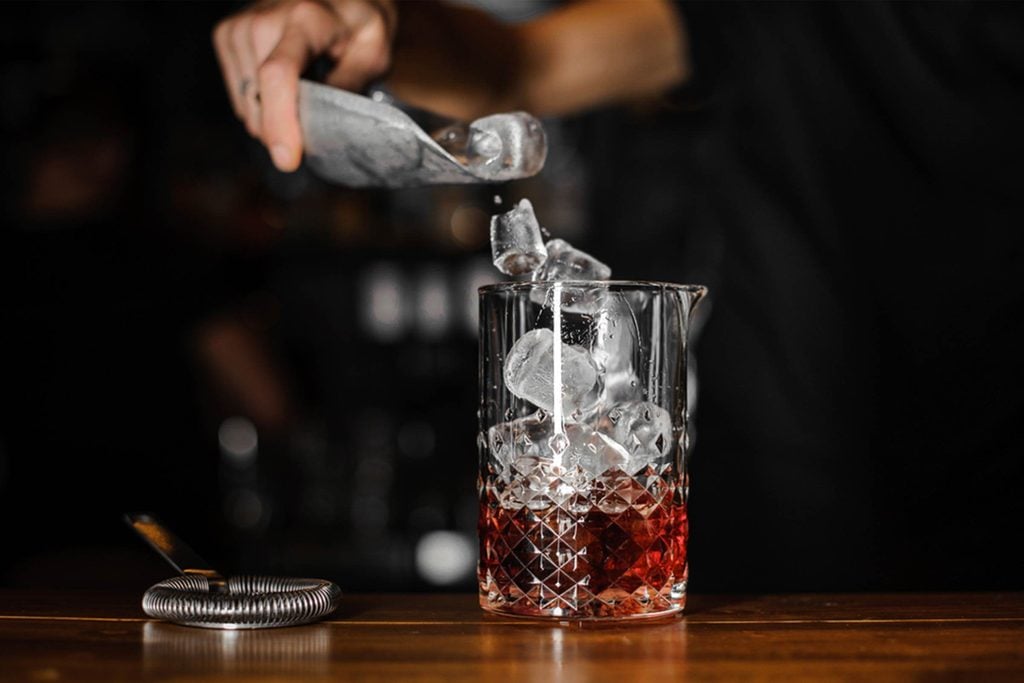Why You Should Think Twice About Ordering a Drink Over Ice
Updated: Nov. 21, 2017
How clean is that ice in your drink, really? Investigations have shown that if you're in a restaurant, it's probably not as clean as you'd think.
 Does anything sound more refreshing than an ice cold drink when you’re thirsty? Unfortunately, there’s a pretty gross reason you might want to skip the ice next time you’re at a restaurant or bar.
Does anything sound more refreshing than an ice cold drink when you’re thirsty? Unfortunately, there’s a pretty gross reason you might want to skip the ice next time you’re at a restaurant or bar.
Business Insider asked more than 30 bartenders what they wish they could tell their customers, and one response made our stomachs turn. “Almost no restaurants or bars clean their ice machines as regularly as they’re supposed to,” one bartender revealed. Translation? Germs—and lots of them. (Check out these other 7 foods professional chefs never order.)
The FDA is pretty vague when it comes to how often an ice bin should be cleaned. Its Food Code just says restaurants should follow the manufacturer’s cleaning recommendations (usually at least two to four times a year), or “develop a cleaning regimen” if the equipment maker doesn’t specify.
Even if restaurants are diligent about cleaning their ice machines and bins, though, your ice isn’t necessarily germ-free. If employees are sick or don’t wash their hands correctly, those germs could spread. Their hands could bump the ice while scooping with a glass, or a scoop’s handle could touch the ice after an employee handles it. Disturbingly, there’s actually a very good chance their hands aren’t clean after washing. One Michigan State University study of more than 3,700 people found that only 5 percent of people actually wash their hands for 15 seconds or more—and the CDC recommends scrubbing for a full 20 seconds. (Don’t miss these other 5 mistakes you make while washing your hands.)
And that one bartender wasn’t alone in thinking restaurant ice is pretty gross. A recent BBC investigation found 13 out of 30 U.K. coffee chain locations tested, including Starbucks, had fecal coliform in their ice. (Read more about that investigation here.) A 2014 report from Utah’s ABC4 found that all four restaurants they investigated had bacteria and fungus. The only place to come out clean was an ice distributor.
Getting sick from dirty ice isn’t common, but it isn’t unheard of. In 2008, investigators said a sick bartender and a dirty ice machine got a bride, groom, and about 70 guests sick at a wedding reception. In 2002, a 15-year-old golfer died and about 80 other golfers got sick, and officials think it’s because a sick employee didn’t wash his hands before handling ice to put in the coolers. “[Contaminated ice is] not going to smell funny. It’s not going to look funny,” microbiologist Debra Huffman, PhD, told NBC at the time. “These are microscopic.” Check out these other 9 everyday items with more germs than a toilet seat.
Even though these cases are far from the norm, it can’t hurt to avoid ice when eating out. In restaurants, shell out a little extra for a bottled drink instead of letting an employee serve you from the fountain, or instead of ordering a shaken cocktail, go for a glass of wine or beer, or order your liquor served “neat.” While you’re at it, find out why you should stop ordering lemons with your water.
[Source: Fortune]